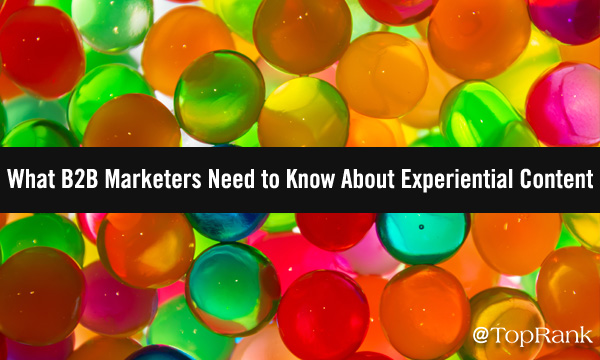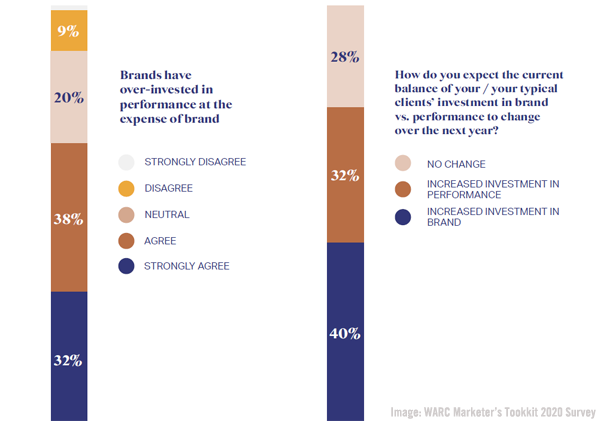Sourced from doxee.
In a previous series of posts, we have taken an extensive look at the characteristics of Inbound marketing, distinguishing it from Outbound, recounting its history, and identifying the latest developments. The goal was to describe the evolution of a concept, from theory to practice.
In this post, we will look at inbound marketing from the point of view of B2B, looking at why it’s effective, and focusing on the features that make it stand out: the production, management, and strategic distribution of high quality content (content marketing).
What is B2B marketing?
“Business-to-business marketing refers to the marketing of products or services to other businesses and organizations. It holds several key distinctions from B2C marketing, which is oriented toward consumers.” This definition is taken from the Marketing Solutions Blog from, LinkedIn, the world’s largest professional networking site with over 550 million members.
In a broad sense, B2B marketing content tends to be more informative and direct than B2C content. This is because the purchasing decisions of businesses, compared to those of consumers, are based on the impact on profits. The return on investment (ROI) is rarely a consideration of the average consumer, at least in the sense of a purely “material” investment (the ratio between expenditure and immediate economically quantifiable benefit), but it is an absolutely primary objective for business decision-makers.
B2B marketers find themselves managing a complex sales process, where they are called upon to identify the real decision-makers and the main stakeholders of the target company within a corporate landscape that is unique and characterized by specific organizational charts and decision-making flows. It becomes absolutely necessary to acquire a solid and precise knowledge of the company so as to be able to map the people really involved in the decisions by reaching them with relevant and personalized information.
Who is B2B marketing aimed at?
B2B marketing campaigns are aimed at any individual who has the ability to influence purchasing decisions. This can include a wide variety of professional titles, up to the C-level.
B2B marketing in context
To start getting an idea of the context, let’s take a look at the Sagefrog Marketing Group’s 2020 Marketing Mix Report B2B (download here), which contains data on B2B marketing strategies, competitive trends and emerging tactics:
- Between 2017 and 2018, at least 40% of B2B companies invested a tenth of their budget in marketing. Since then, that number has risen to almost 50%
- The total expenditure is distributed across the following: 56% on Digital Marketing, 52% on Website Development and 36% on tradeshows and events
- Content Marketing (27%) is an area in constant growth
In the 2018 B2B Content Marketing report focusing on Benchmarks, Budgets, and Trends by CMI and MarketingProfs, 91% of companies employ Inbound Marketing as “a strategic marketing approach focused on creating and distributing valuable, relevant, and consistent content to attract and retain a clearly defined audience — and, ultimately, to drive profitable customer action.”
Of the remaining 9%, 54% said they plan to invest in content marketing within 12 months; 43% have no immediate plans to use content marketing; and 4% have used content marketing in the past.
Quality content: a strong return on investment
The Sagefrog Report highlights that quality content can offer a strong ROI when properly optimised for search engines so that it can be easily found and shared over and over again. This means that quality content combined with clear and graphically pleasing landing pages and contact forms can help provide qualified leads. To achieve this goal, each piece of content must be designed in such a way that it is informative, relevant, searchable, shareable, not overly promotional, and above all, distinctive from that proposed by competitors.
Where the objectives of marketing and sales meet
Among marketers’ main objectives for 2020, in the first place is the need to convert leads into customers, followed by increasing sales, growth in brand awareness, the creation of “Thought Leadership,” and finally, increased website traffic.
What’s important to point out here is that the two main objectives are in fact priorities that marketing and sales teams share, which suggests the need to harmonize operations between the two departments.
Sales and marketing leads get personal
Referrals are the main source of qualified marketing and sales leads (63%). This is by no means surprising: B2B draws useful knowledge and contacts from the interpersonal networks of professionals, who are more likely to invest their time and money working with a company if they can rely on an existing connection.
In any case, if referrals are the main source of sales and marketing leads, inbound marketing is also gaining traction (33%). In both cases, we can read the strong signal of increasing attention to the personalization of communications.
In fact, the marketing experts interviewed by Sagefrog say that in 2020 they will explore personalization strategies (47%) through Account-based marketing (42%), video marketing, (41%) and inbound marketing (39%), AI and automation (36%), conversational marketing in the form of chatbots (33%) and influencer marketing (27%).
How do I create a B2B marketing strategy? The best B2B inbound marketing tactics
The competition to win the attention of customers gets tougher every day. Building a B2B strategy that delivers results requires considered planning, execution, and management. In the aforementioned LinkedIn article, the steps for planning a B2B marketing strategy are outlined. The steps for getting there, as the aforementioned LinkedIn article describes, are part of any inbound plan because they incorporate two fundamental assumptions:
- Personalized, useful, and relevant content that authentically conveys the brand’s vision and value system through relevant channels
- Continuous listening to the feedback of the reference target, previously profiled
- Develop a global vision and select specific and measurable business objectives
- Define the market, never forgetting that you’re talking to a person. While B2C goods often have a wider and more general audience, B2B products and services are marketed to a set of customers with specific needs related to their sector, department, and the business function. However, potential customers are also individuals with precise demographic data, urgencies, and priorities.
- Identify B2B inbound marketing tactics and channels. Once solid information about the target audience has been defined, determine how and where to reach them. The knowledge gained through the previous step should help. In any case, it is good practice to prepare a list of questions to establish time and place, both physical and virtual, in which to try to intercept those who will be the recipients of targeted marketing actions.
- Create content, distribute it and organize campaigns. After deciding which channels to use, plan and implement best practices for each one. Each action should, in any case, be built around some critical elements: a message, expressively translated with a creative approach, a series of useful insights, the most accurate targeting possible and some understandable, transparent and persuasive call to action.
- Measure and improve. Consult analysis and metrics reports in order to activate review and fine-tuning processes in real time: even with a well-studied basis, the creation of content and campaigns is intrinsically based on hypotheses and forecasts and must be optimized until you have substantial involvement and conversion data to rely on. Observe the channels, topics and media that resonate the most and then enhance them.
Essential elements of B2B inbound marketing tactics
Truly effective B2B marketing is conversational, focused, and contextually relevant, and a B2B marketing strategy must include a variety of content, most of which is typically inbound: blogs, white papers, social media, email, videos.
Blogs: Regularly updated blogs provide organic visibility and direct inbound traffic to the website, whether institutional or product based. The blog can contain different types of content: copy, infographics, videos, case studies and much more.
Search: SEO best practices must be updated in conjunction with Google’s algorithm, which is changing more and more often, making it difficult to keep up. Lately, the focus has shifted from keywords and metadata to the interpretation of the user’s signals of intent.
Social media: Both organic and paid traffic should always be part of the mix. Social networks allow you to reach and attract potential customers where they are active. B2B customers increasingly use these channels to search for potential suppliers and to inform their purchasing decisions.
White papers and ebooks: Resources containing valuable information can be gated (requiring users to provide contact information or perform another action to download the content) or freely available. Often used as B2B lead generation tools.
Email: Although its effectiveness in recent years has been impacted by the proliferation of spam filters, email is still widely used today.
Video: Content that can be used within many of areas listed above (blogs, social media, e-mail) is becoming increasingly important for B2B strategies
In conclusion: Be human
When it comes to B2B marketing, the biggest mistake we could make is thinking that you are addressing an abstract and impersonal entity. In fact, as it should be clear by now, any marketing action will be aimed at recipients who are first and foremost real people who are driven by emotional and cognitive motivations. Although corporate decisions tend to be more rational and logical in nature, this does not mean that the content communicated must be formal or “robotic” in tone.
For the same reason, campaigns that are too broad will not be able to connect with (or influence) the audience in the same way that those aimed at specific segments can. Defining and segmenting the audience is an absolutely fundamental preliminary step in creating a message that speaks directly to individuals driven by a real need.
Personalization and relevance are essential: “speaking the language” of customers is a valid precondition because it allows us to cross an initial barrier, that of understanding. But it’s not enough: it’s necessary to publish content and ads that thematically adapt to the place where they are displayed. For example, shorter videos with simpler and more immediate narrative hooks work better on social media feeds, while a longer video is probably better suited to YouTube. Put yourself in the end user’s shoes and humanize your relationship with him or her right away. As in any Inbound strategy, even in the case of B2B marketing the starting point—each person’s needs and desires—is unique.




































